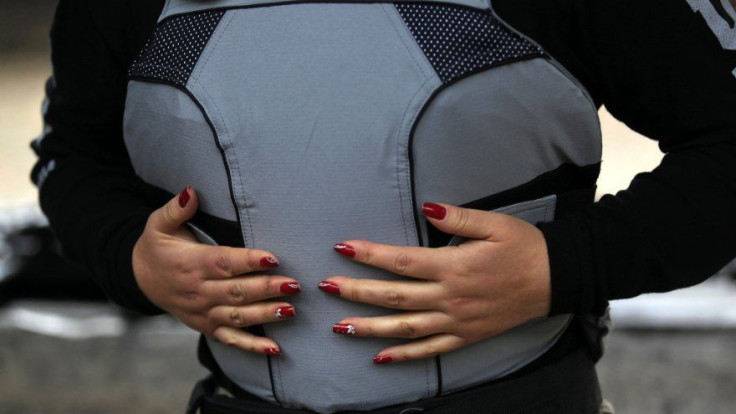Honoring The Man Who Helped Develop Kevlar And Saved Countless Lives

Last week, a retired DuPont (NYSE: DD) chemist in Delaware, Tom Bair, passed away. As a modest man who loved his family, friends and sports, his death would be unremarkable except for this: Countless police officers and soldiers owe their lives to Dr. Bair because he was instrumental in inventing Kevlar. Kevlar is the fiber in bullet-resistent vests that police and military personnel wear to prevent being killed or wounded by gunshots.
According to the 1992 book "Inventive Minds: Creativity in Technology" ( edited by Robert John Weber and David N. Perkins, Oxford University Press), DuPont chemists in the late 1960s and early 1970s had been working on developing a fiber that was very strong. But they were having problems transforming certain polymers that had characteristics of high strength and density into a fiber that could be spun (and thus made into a fabric).
Enter Dr. Bair.
Tom Bair was born in 1938 in northeastern Pennsylvania’s coal country. He earned his B.S. in chemistry at Penn State in 1960 and a Ph.D. in organic chemistry at the University of Wisconsin in 1966. Before he attained his Ph.D., he had already been hired by DuPont to work in its fiber research section.
As I’m an economist, not a chemist, the best I can do to describe Bair’s scientific contribution is to say that he discovered, through experimentation, how a certain high-strength/density polymer could be chemically treated (without loss of the polymer’s properties) so it could be transformed into a "spinable" fiber. There were other researchers trying to solve the "spinability" problem (using similar polymers), but Bair was the first to cross the finish line.
Bair’s enhanced polymer was chosen by DuPont for further development, and the end result was Kevlar.
According to a 2009 report by Research Forum, the initial Kevlar protection garments were issued in 1975 as a one-year demonstration project. The first recorded incident of a life saved by the vest occurred almost immediately thereafter, when a Seattle police officer was shot in the chest and survived. There were 18 subsequent incidents during that one-year project, in which the vests successfully protected police officers.
Police deaths due to firearms have decreased significantly since the 1980s and 1990s, when FBI statistics indicated there were an average of 64 deaths per year by firearms (640 deaths during the period 1987-1996). Of those 640 deaths, 224 involved officers wearing body armor, however, most of those deaths involved areas not covered by body armor: Above (head, neck), below and between (e.g., shoulder holes) the armor pads.
In 1996 (the year of the oldest available online FBI report on the matter was writtern), 51 officers were feloniously killed by firearms, a significant decrease from 1995 when 62 officers were killed. Of the 51 victims, many died due to wounds in the areas described above. However, only one death was attributable to a bullet penetrating the body armor.
In the most recent FBI data available (2012), 44 officers were feloniously killed with firearms; 23 were wearing body armor at the time. Again, their deaths were mostly due to non-coverage area wounds. However, no deaths were due to a bullet penetrating the armor.
In fairness, some years have seen fatalities due to armor penetration -- when the ammo used was more powerful than the armor’s capabilities (e.g., in 2010, when four such deaths occurred). In response, the technological work Dr. Bair pioneered is being constantly improved to increase a police officer’s odds when faced with a skilled, armed assailant.
Likewise, more law enforcement agencies are requiring their officers to wear body armor. In addition, there have been many news stories in which officers attested to how wearing a vest made the difference between life and death. Just two weeks ago, a Los Angeles police officer was shot seven times, mostly in the chest; his bulletproof vest is credited with saving his life
In spite of all the statistics and testimonials, as far as I know nothing physical exists to mark Dr. Bair’s achievement. Unlike certain Washington politicians whose names are honored in countless federal buildings (the late Senator Robert Byrd of West Virginia comes to mind), it seems Dr. Bair had no desire to immortalize himself in that way. Nor, despite his accomplishments, did he seek fame, as opposed to some people today who are famous for merely being publicly outrageous.
Rather, Dr. Bair’s “monument” is a living one, as evidenced by all those who survived after being in the line of fire because of their body armor. It’s reflected every time a husband, wife, father, mother, son or daughter comes home and says to their loved ones, ‘It’s OK, and I’m OK, I was wearing my vest.’"
In my opinion, that beats a having a brass plaque, hands down. Or, as the nuns used to say, he’ll earn his crown in heaven. I hope he has.
As an indication of his humility, one of his last wishes was for any memorial gifts be directed to Wilmington’s Sunday Breakfast Mission.
If you or a loved one feel a debt to Dr. Bair, you couldn’t do better than that.
Joanne Butler is a graduate of the Kennedy School of Government at Harvard University and a former professional Republican staff member at the U.S. House of Representatives Ways and Means Committee.
© Copyright IBTimes 2024. All rights reserved.











